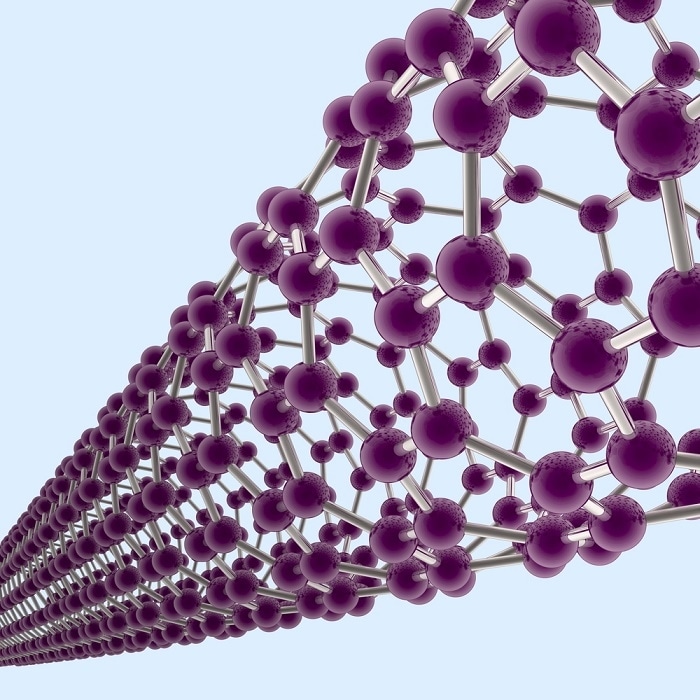Apr 7 2016
Researchers from the Energy Department's National Renewable Energy Laboratory (NREL) have explained that an accurately tuned carbon nanotube thin film can function as a thermoelectric power generator, which can then be used to capture and use waste heat.
 Image Credit: Serge SH | Shutterstock.com
Image Credit: Serge SH | Shutterstock.com
This study will be useful to develop thermoelectric devices based on either; composites comprising of single-walled carbon nanotubes (SWCNT), or SWCNT films alone. Over half of the energy globally used is rejected as waste heat, and because of this the concept of thermoelectric power generation is emerging as a vital part of energy-efficiency and renewable energy portfolios.
There have not been many examples where people have really looked at the intrinsic thermoelectric properties of carbon nanotubes and that's what we feel this paper does.
Andrew Ferguson, Research Scientist, Chemical and Materials Science Center, NREL
The research, "Tailored Semiconducting Carbon Nanotube Networks with Enhanced Thermoelectric Properties," has been published in the Nature Energy journal, and is a joint effort between NREL, Professor Barry Zink's group at the University of Denver, and Professor Yong-Hyun Kim's group at the Korea Advanced Institute of Science and Technology. Ferguson and Jeffrey Blackburn are the co-lead authors of the paper. The other authors from NREL include Azure Avery (now an assistant professor at Metropolitan State University of Denver), Ben Zhou, Elisa Miller, Rachelle Ihly, Kevin Mistry, and Sarah Guillot.
It has been demonstrated that nanostructured inorganic semiconductors enhance the working of thermoelectric devices. Inorganic materials may not be suitable when the semiconductor is required to be irregularly shaped, flexible, or lightweight, because they fail to meet the flexibility criteria and often tend to be heavy. Carbon nanotubes are organic and are known to be more flexible and lighter in weight.
The benefits of using a specific SWCNT for thermoelectrics depends on whether the nanotube is a semiconductor or metallic, both of which are formed at the same time during the synthesis of SWCNT. A metallic nanotube can damage devices like a thermoelectric generator, but a semiconductor nanotube improves performance. In a number of electrical and optical devices, the semiconducting SWCNT’s electrical band gap is expected to affect the thermoelectric performance.
Ferguson stated that, Blackburn, a senior scientist and manager of NREL's Spectroscopy and Photoscience group, has devised an ‘expertise at separating semiconducting nanotubes from metallic ones’. Blackburn’s methods played a major role in the research.
We are at a distinct advantage here that we can actually use that to probe the fundamental properties of the nanotubes.
Andrew Ferguson, Research Scientist, Chemical and Materials Science Center, NREL
The researchers obtained enriched semiconducting samples, using polyfluorene-based polymers to extract nanotubes from polydisperse soot. The semiconducting SWCNTs were grown on a glass substrate to form a film, which was later saturated in a solution of triethyloxonium hexachloroantimonate (OA), a process referred to as doping. The density of charge carriers is increased by the doping process. These charge carriers pass through the film to condusct electricity. The researchers discovered that the best performing samples were those that were exposed to an increasing concentration of OA, but not at the extremely high doping levels. The research team also identified an optimum diameter for a carbon nanotube to obtain excellent thermoelectric performance.
Thermopower refers to the voltage obtained when exposing a material to a temperature gradient. In thermoelectric materials, a trade-off occurs between electrical conductivity and thermopower, because thermopower is found to decrease with increasing conductivity. The researchers further discovered that with carbon nanotubes it is possible to maintain large thermopowers even in extremely high electrical conductivities. The doping method discovered by the researchers, decreased the thermal conductivity even though it dramatically increased the electrical conductivity. This unpredicted outcome is actually beneficial for carbon nanotubes to generate thermoelectric power. This is true because the best thermoelectric materials are expected to contain high thermopower and electrical conductivity, while simultaneously maintaining low thermal conductivity.
The research was financially supported by a grant from NREL’s Laboratory Directed Research and Development program. The Solar Photochemistry Program within the Energy Department's Office of Basic Energy Sciences funded the semiconducting SWCNT separations.
NREL is the U.S. Department of Energy's primary national laboratory for research and development in energy efficiency and renewable energy. NREL is operated for the Energy Department by The Alliance for Sustainable Energy, LLC.